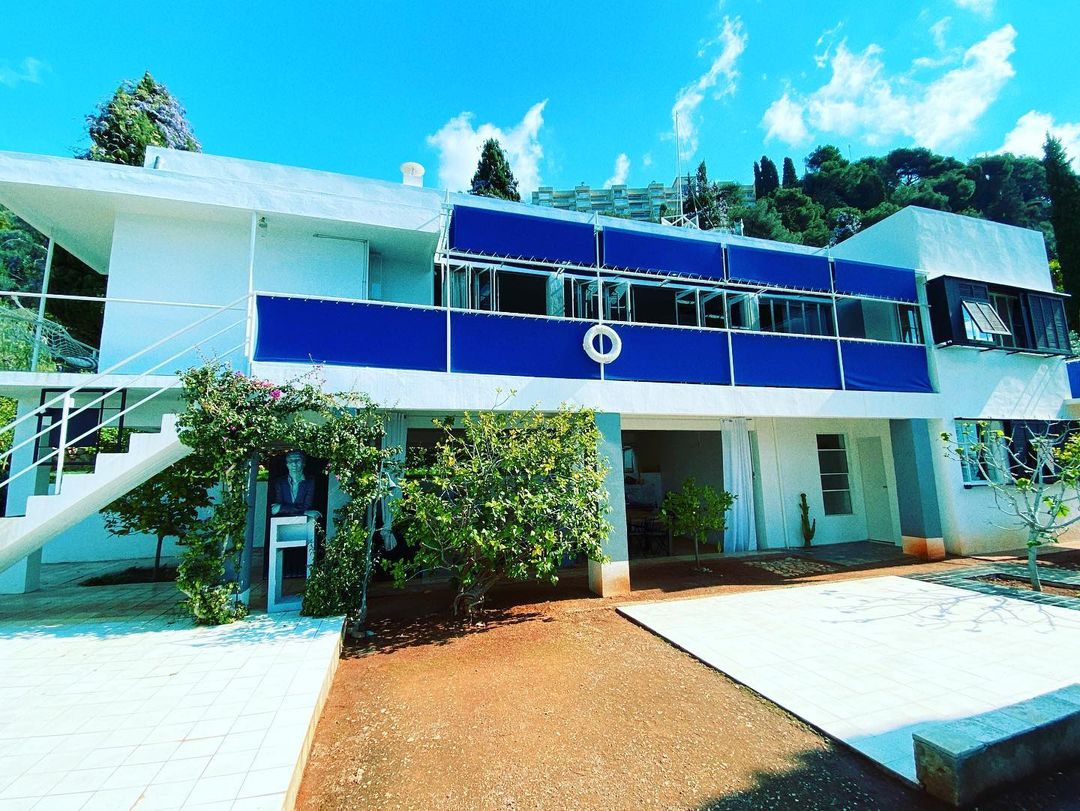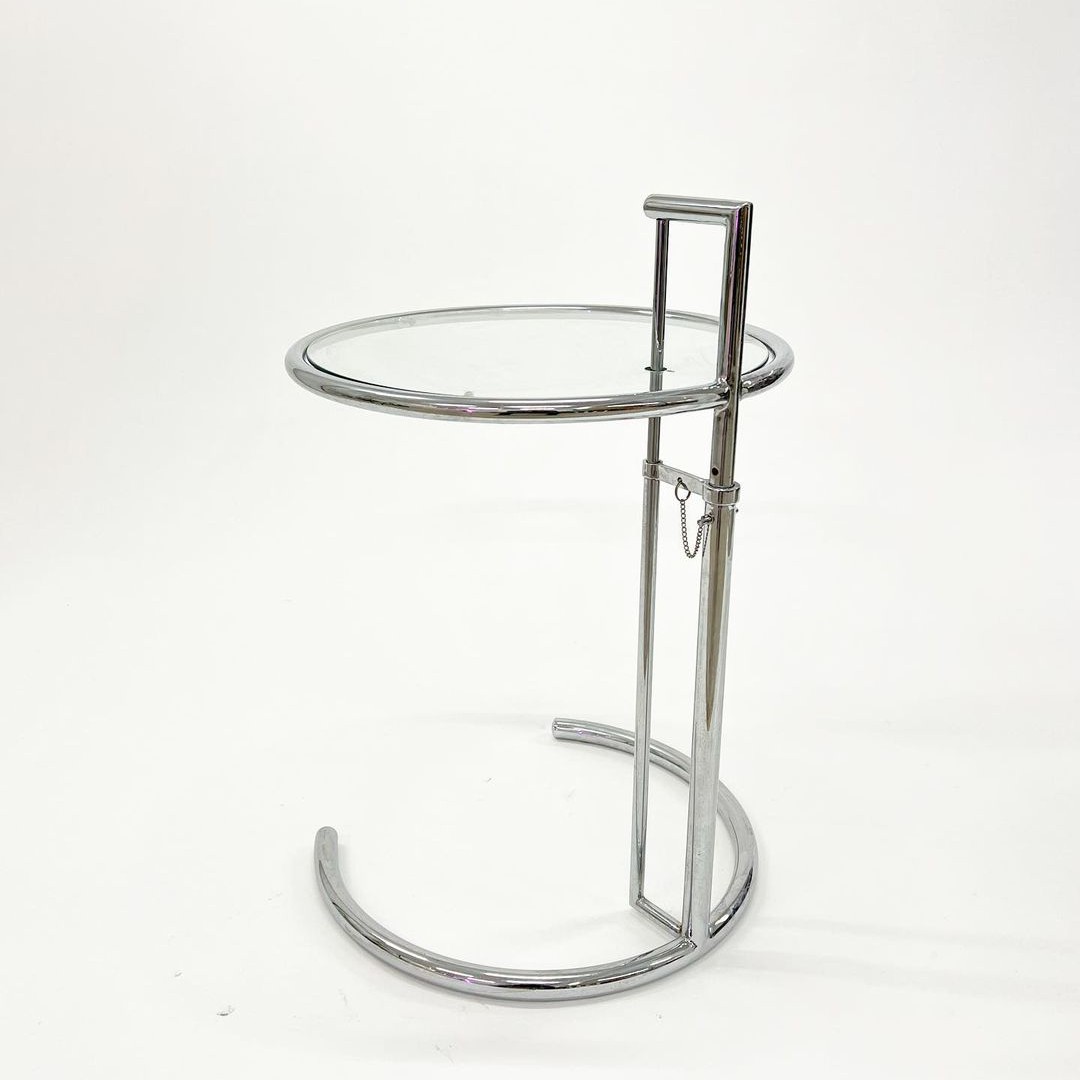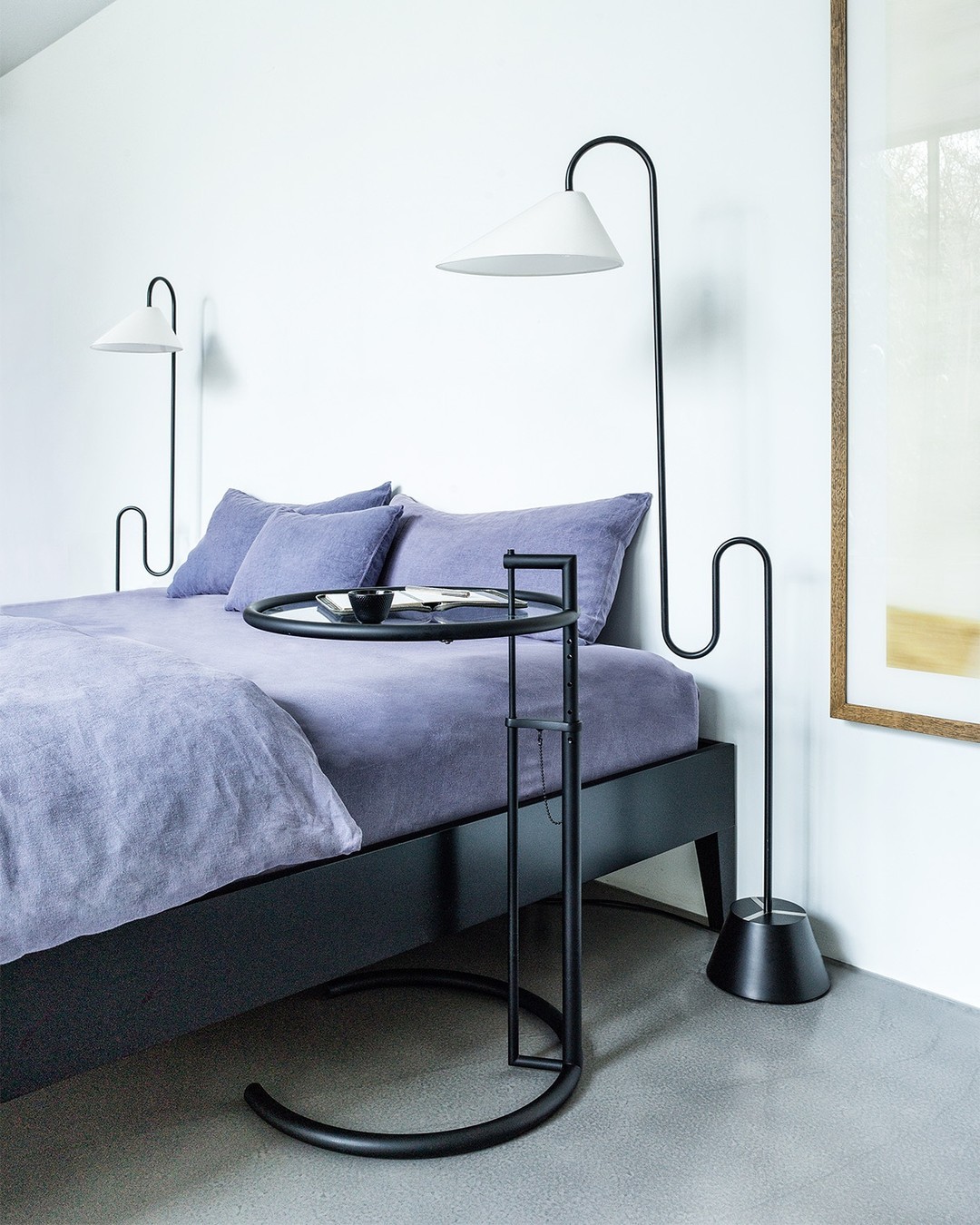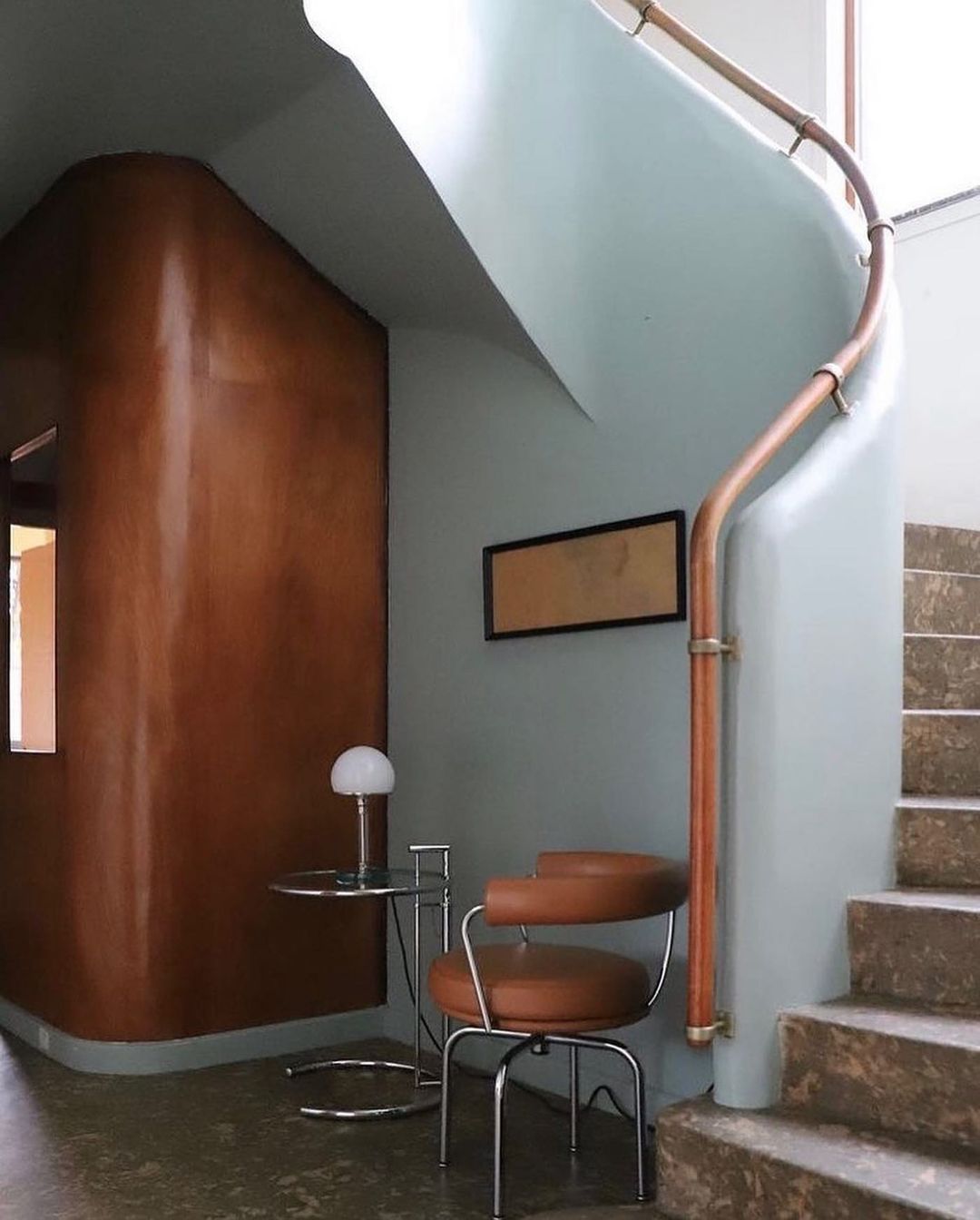Named for Eileen Gray’s summer home at Maison en Bord de Mer in Roquebrune Cap Martin, which she built for her and her collaborator Jean Badovici, the name E1027 is code. E for Eileen, 10 for Jean (J is the 10th letter of the alphabet), 2 for B(adovici), and 7 for G(ray).
Eileen Gray’s E1027 was named after her and her partner.

This simple, height-adjustable glass and chrome table was originally designed to cater to her sister’s penchant for breakfast in bed, and from humble beginnings has become a sought-after design classic.
Perfectly modern, this table fits into any interior.

According to the Design Museum, Gray was ignored for most of her life and it wasn’t until after her death that she finally gained recognition as one of the most important designers of the 20th century.
A biography of her on her website recounts that: “As a woman, Eileen Gray did not have access to the support networks that her male contemporaries benefited from. She, too, did not have the advantage of working with a powerful male mentor, like most other women who had an impact on early 20th century design: like Charlotte Perriand with Le Corbusier, and later with Jean Prouvé; Anni Albers with her husband Josef; or Lilly Reich with Mies Van Der Röhe».
Neither did she study at the same schools as them, such as the Bauhaus in Germany, nor did she work as an apprentice in a studio like Le Corbusier’s in Paris. Instead, her privileged background—just like her gender—left her isolated.

Gray was born in Ireland, the youngest of five children in a wealthy family, and divided her time between there and the family’s other home in Kensington, London. Her father, an artist, allowed her to enroll in the Slade School of Art and she first worked as a lacquer artist.
After World War I, Gray decided to concentrate on architecture, encouraged by the Romanian-born architecture critic Jean Badovici, and in 1924 they began work on the construction of a house, E-1027, on a steep cliff overlooking to the Mediterranean at Roquebrune, near Monaco. Gray designed the furniture, as well as working with Badovici on its structure. The well-known Bibendum table and armchair were inspired by Marcel Breuer’s recent experiments with steel tubes at the Bauhaus.

Gray’s work represented in the MoMA New York collection includes his Adjustable Table E1027, and his designs have appeared in many MoMA exhibitions, the first being Recent Acquisitions: Architecture and Design in 1979, as well as in more recent exhibitions , Designing Modern Women 1890-1990 (2013-2014), and How Should We Live? Proposals for the modern interior (2016-2017).
Before her death, Eileen Gray sold the design to British furniture manufacturer Aram.
Ruth Aram, director of the Aram Store in London, says that the E1027 is her favourite piece.
«We have hundreds of designers, but my favourite is the E1027 side table by Eileen Gray. The kids use it, I use it, it’s perfect.»
